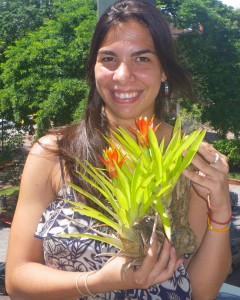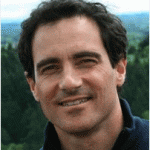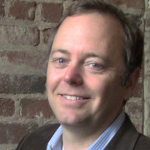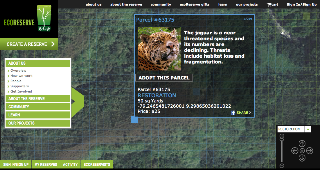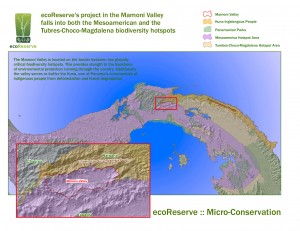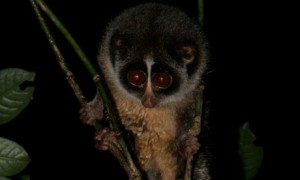
En cuanto llegué a Mamoní Arriba encontré a Arsenio esperándome con dos caballos. No tenía planeado montarme en un caballo, pero me tocaba por primera vez en mi vida montar para poder llegar al filo de la montaña que vamos a restaurar. El nombre de mi caballo era Ardillo, según Arsenio porque se parece a una ardilla blanca que es muy común en el área. Le pedí a Arsenio que me diera un curso rápido de equitación, y él respondió con dos ideas “debes montar con seguridad y un verdadero jinete es el que se ha caído del caballo por lo menos una vez”. Por supuesto yo pensé “hoy no me quiero convertir en un verdadero jinete”.

Empezamos la cabalgata a la montaña por un camino que empieza donde el río Mamoní se une con la quebrada del Espavé. El objetivo de esta gira era llegar a las parcelas de ecoReserve. Antes de que llegara ecoReserve estas tierras habían sido utilizadas en su mayoría para el pastoreo de las vacas. Estas parcelas están en el filo de la montaña, y para llegar era necesario montar caballo por media hora sobre lomas empinadas y luego viajar media hora caminando. Debido a que comenzamos la caminata temprano en la mañana, nos topamos con una manada de vacas lecheras que iban saliendo de la sala de ordeñar. Intenté contar las cabezas de ganado pero cuando llegué a 25 me detuve.
El pastoreo es el uso de suelo más común dentro del área de Mamoní Arriba y tienen un gran valor cultural. Esta práctica es un problema ecológico en el área porque requiere de la tala del bosque. Una vez que se ha talado el bosque se introducen pastos exóticos para alimentar al ganado; el efecto de estos pastos sumado al impacto del ganado deteriora el suelo. El pastoreo no está restringido al ganado ya que gran cantidad de las tierras usadas en Mamoní Arriba son para alimentar a los caballos. El pastoreo es una práctica no sostenible desde el punto de vista ecológico y económico porque las tierras disponibles para potreros no son infinitas.
Arsenio y yo llegamos a las tierras de ecoReserve a la parcela donde queremos comenzar los proyectos de restauración. Esta parcela está sobre un filo que por un lado está rodeada de montañas cubiertas de bosque y por el otro lado se puede ver el valle de Mamoní. Yo hice mi maestría en ecología de restauración y estaba intentando reunir los diferentes conceptos que había estudiado para determinar el potencial que tenía el área para ser restaurada cuando observé la abundancia de la paja canalera (Saccharum spontaneum) sobre las laderas del filo. La paja canalera es un pasto de tres metros de alto que fue introducido por los estadounidenses para evitar la erosión del suelo a lo largo del Canal de Panamá. Hoy en día se ha convertido en una especie invasora que se encuentra a lo largo de todo el país y que es enemiga de cualquiera que desee utilizar las tierras que han invadido incluyendo los restauradores del bosque y los ganaderos.






